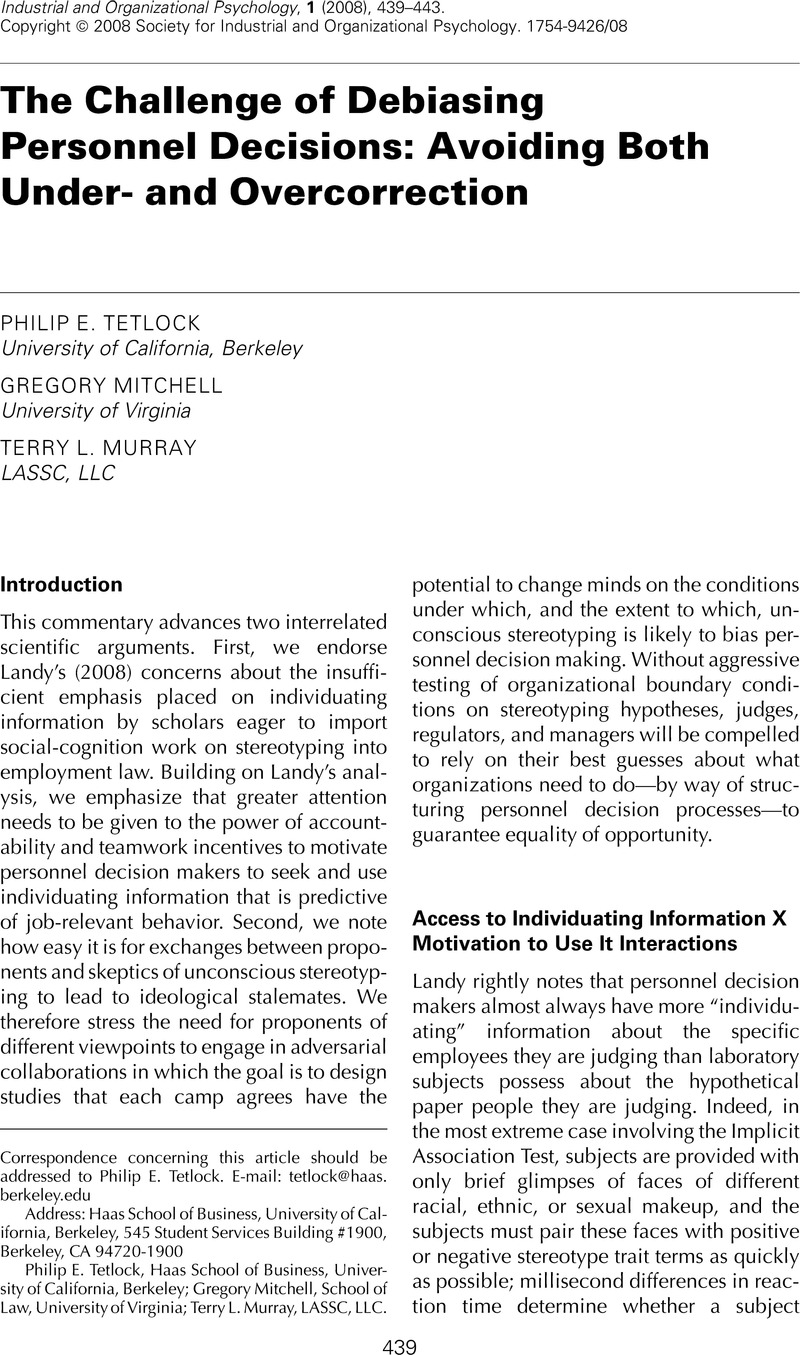Crossref Citations
This article has been cited by the following publications. This list is generated based on data provided by Crossref.
Landy, Frank J.
2008.
Stereotyping, Implicit Association Theory, and Personnel Decisions: I Guess We Will Just Have to Agree to Disagree.
Industrial and Organizational Psychology,
Vol. 1,
Issue. 4,
p.
444.
McCARTHY, JULIE M.
VAN IDDEKINGE, CHAD H.
and
CAMPION, MICHAEL A.
2010.
ARE HIGHLY STRUCTURED JOB INTERVIEWS RESISTANT TO DEMOGRAPHIC SIMILARITY EFFECTS?.
Personnel Psychology,
Vol. 63,
Issue. 2,
p.
325.
Fiske, Susan T.
and
Borgida, Eugene
2011.
Best practices: How to evaluate psychological science for use by organizations.
Research in Organizational Behavior,
Vol. 31,
Issue. ,
p.
253.
Fisher, Emily L.
and
Borgida, Eugene
2012.
Intergroup Disparities and Implicit Bias: A Commentary.
Journal of Social Issues,
Vol. 68,
Issue. 2,
p.
385.
Li Kusterer, Hanna
Lindholm, Torun
and
Montgomery, Henry
2013.
Gender typing in stereotypes and evaluations of actual managers.
Journal of Managerial Psychology,
Vol. 28,
Issue. 5,
p.
561.
Chapman, H. R.
Chipchase, S. Y.
and
Bretherton, R.
2015.
Understanding emotionally relevant situations in primary dental practice. 3. Emerging narratives.
British Dental Journal,
Vol. 219,
Issue. 10,
p.
491.
Mitchell, Gregory
2017.
Measuring Situational Bias or Creating Situational Bias?.
Psychological Inquiry,
Vol. 28,
Issue. 4,
p.
292.





